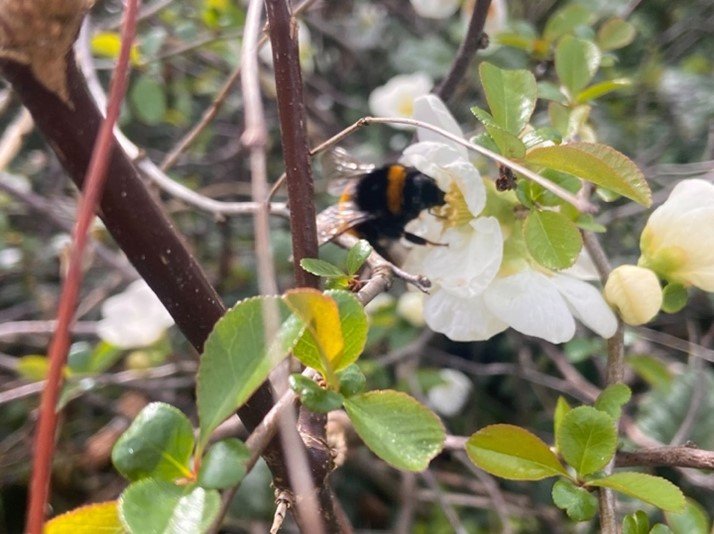Learning to be Original: In the Age of AI, Students Need to be Taught the Skills of Innovation
By Dr. Alastair Bonnett, author of How to be Original: Transform Your Assignments and Achieve Better Grades and How to Argue. Use the code COMMUNITY3 for a 20% discount, valid worldwide until March 31, 2024.
AI can do a lot of things but it cannot do originality.
Students need to be taught the skills of innovation. It’s odd that it has taken the AI revolution for this penny to drop. Originality has been a key criterion for the best marks for years. It has rarely been taught or explained yet it is lauded, spoken of in hushed tones, prized and praised. For academics originality has a semi-mystical aura. In How to be Original (Sage, 2023) I try to scupper this gilded ship and disenchant originality. I reckon I will have succeeded if students start to think of originality as just another skill; no genius required.
Originality is an act of engagement. It requires knowing what has gone before and, in some specific and limited way, adding to it. It is not ‘blue-sky thinking’. Hoping that something substantive will come your way if you scribble down enough notes, take enough long walks and stare into enough thin air, might occasionally work for those already immersed in the literature, but for students it will end in a whole heap of nothing. Reading and studying is the only sure path to originality.
To be original we need to know how to ‘add value’ to an existing debate.
One approach is to draw upon work from another discipline. Students need to be clear about what specific sub-field they will be referencing and justify their choice. Sentences such as ‘This essay draws upon the emerging sub-field of Island Studies’ or ‘In this presentation I will be drawing upon insights from cultural anthropology’ indicate that your work is going beyond the usual and hints at why (because it is ‘emerging’, because of ‘insights’). These sentences point to specific fields. This is more useful than general claims. For example, claiming to be drawing upon ‘insights from philosophy’. Philosophy is extremely diverse, so ‘insights from philosophy’ sounds vague and ill-informed.
Students can also be original by re-contextualising a topic, for example by exploring it in a relatively unexplored geographical or historical context. Taking the topic of, say, local government and looking at in the context of Morocco can ‘add value’ and requires an intellectual reach and curiosity that, so far, is beyond ChatGPT.
I guess it is because I am a geographer that I am especially attracted to attempts to broaden topics by relocating them. When thinking about geographical contexts, two questions present themselves: where? (obviously) and (less obviously) ‘according to who?’. Every ‘where’ has many points of view. For example, rather than simply relocating the topic of local government to Morocco, you might want to think about how your object of study varies from the point of view of Black Moroccans, Moroccans in the tourist business, or some other specific group. Another kind of focus is occupational and institutional. Writing about ‘Moroccan town planners’ or the ‘Moroccan judiciary’ is more useful than just writing about ‘Moroccans’.
These are simple tips. Here’s another one and it’s really important. You don’t become more original by doing 50 original things. You become baffling. Just one new thing is far better than a flurry of novelties.
There are some big challenges for universities in teaching originality across all of the sciences and humanities. The status of originality in the creative disciplines (by which I mean art, performance, graphics, fashion and creative writing) is a little bit murkier.
According to the assessment criteria I’ve looked at – and I’m sure there are counter-examples out there - originality is not a key goal in the creative disciplines. Assessment is based on skills of integration and engagement and, by implication, consistency and commitment. In other assessment rubrics, we find ‘risk-taking’, and/or the development of a ‘personal style’ or ‘distinctive style’, being named and valorised. But none of this would count for a lot without the unnamed, and seemingly unnameable, skill of originality. If students in Fine Art are just repeating a formula their work will not stand out and will not get the highest marks.
Talking this over with academics who work in the creative disciplines, it seems that one reason they keep originality in the shadows is that assessing creativity – which is at the heart of these disciplines - is an inherently subjective process. This leads to assessment becoming a site of unease and anxiety. An emphasis on clearly observable characteristics, such as engagement and integration, mitigates this problem. Some also worry that explicitly encouraging originality opens a Pandora’s box of unwanted consequences. At its worst, originality leads to eccentricity, triviality and self-regard.
Originality is not universally loved.
Often for good reason. Capitalism is a motor of endless ‘new stuff’ and it is wrecking the planet. New is not always better. Originality can fail. It can fall flat on its face. Get it wrong and you can end up with a very low mark.
For universities teaching originality presents an inevitable but sizeable challenge. We cannot just send students away and tell them to get on with it. That doesn’t work. Students are not experts in their subjects. Originality is, by definition, unique, it has to be tailored to personal interests. Teaching originality is a process, it emerges, often after many false starts, from talking to students, ideally in small groups and 1-2-1. It requires time and individual attention.
Since I started teaching in universities, over three decades ago, this has become more difficult. Everything has been scaled up. Class sizes have tripled, quadrupled; tutor groups doubled and then some. Staff promotions are commonly based on pulling in grants and getting a ‘buy-out’ from teaching has been turned into something to aspire to. No wonder, students feel they are not listened to, or even seen. This model was always questionable but is clearly not fit for purpose in the age of AI. Teaching needs to be valorised, resourced and energised. If we are serious about teaching originality – and we have to be – we will need more staff delivering teaching (or fewer students) and a new respect for teaching as a creative and skilled activity.
An earlier version of this article first appeared in University Affairs

















AI can do a lot of things but it cannot do originality. Learn more from Dr. Alastair Bonnett, author of How to Be Original.